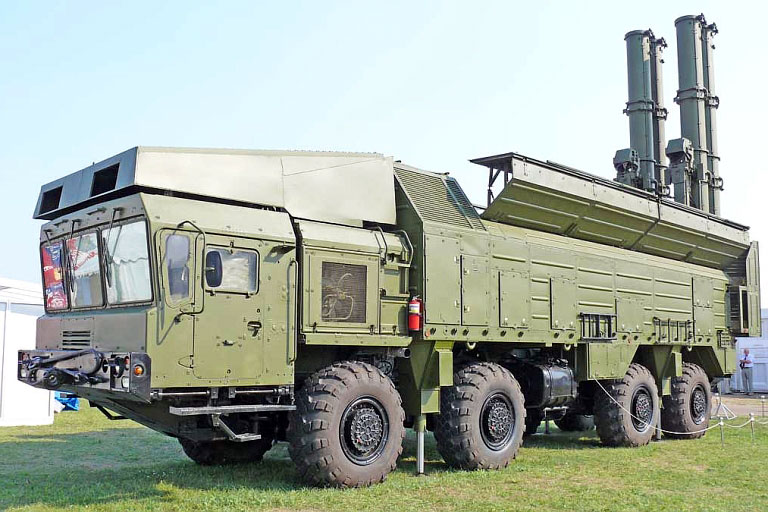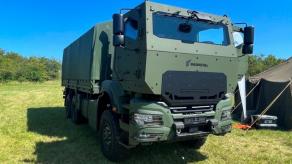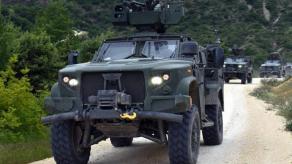Kremlin-affiliated media reported their president, Vladimir Putin, as saying that russia should resume producing short- and intermediate-range missiles and then decide where to place them. He claimed this would be "a response to the placement of U.S. nuclear missiles on the territory of Denmark."
However, no nuclear-capable missiles have been placed in Denmark. There was only a deployment of MK70 PDS systems with SM-6 anti-missile interceptors during exercises on Bornholm island in May 2024. More paradoxically, russia itself has been developing missiles that violated the Intermediate-Range Nuclear Forces (INF) Treaty long before it denounced the agreement in 2019.
Read more: Germany Initiates European Reinforcement with Long-Range Missiles Amid the russian Threat

The INF Treaty, established in 1989 between the United States and the Soviet Union, banned both parties from deploying two types of weapons on land-based launch systems: short-range missiles, defined in the document as those with attack ranges 500 to 1,000 kilometers, and intermediate-range missiles with ranges 1,000 to 5,500 km. As a result, Washington discarded their Pershing and Tomahawk, and Moscow its RSD-10 Pioner systems.
Iskander-K and Kalibr
Missiles currently in operation with russia, such as the 9M729 cruise missiles deployed by the Iskander SRBM, already qualify as intermediate-range missiles. Western data indicates the 9M729 has a maximum attack range of exactly 1,500 km, a key reason for russia's INF Treaty denunciation in 2019. The 9M729 has a fuselage length of 7.94 meters, while another cruise missile for the Iskander system, the 9M728 (R-500) with a 500-kilometer range has a fuselage length of 7.4 meters.
Both types, the 9M729 (1,500 km) and the 9M728 (500 km), are collectively termed Iskander-K. The russian military industry can produce up to five cruise missiles of this family per month.

Kalibr sea-based cruise missiles can also be classified as a tool used by russia to circumvent the INF Treaty norms under certain conditions. Let's clarify: it's one thing when these cruise missiles are deployed by ships operating in open seas (like frigates or submarines), but it becomes a completely different matter when Kalibrs are carried by small missile ships belonging to Project 21631 Buyan-M and Project 22800 Karakurt.

These corvettes were deliberately adapted to move through the internal waterways of the russian federation, so that they could "legitimately" deploy far-reaching cruise missiles anywhere on russian territory without formal violations.
Meanwhile, NATO did not (and still don't) have any missile-carrying ships capable of traversing internal waterways. That is, the principle of parity, which was the foundational logic behind the INF Treaty, is missing here.

Zircon and RS-26 Rubezh
The intermediate-range missiles currently available to the russian armed forces include the hypersonic Zircon, initially an air-launched weapon adapted for ground-based launch.
Read more: "How russian 3M22 Zircon Reached Hypersonic Yet Failed to Accomplish the Very Task it was Created For"
But perhaps the most important asset that should be mentioned in the context of Putin's statements is the RS-26 Rubezh. Created by 2018, this system can be seen as a reincarnation of the RSD-10 Pioner, with a range of up to 6,000 kilometers. Official russian media pointed out that RS-26 was based on the Yars intercontinental ballistic missile (ICBM) but its operational range was specifically limited to not exceed 6,000 kilometers, bypassing intermediate-range missile restrictions.
Despite successfully passing all tests, the RS-26 Rubezh was removed from the 2018–2027 armament development program, the reason is unknown. However, given Putin's recent statements, the Kremlin might revive the RS-26 project.

Read more: Researchers Counted Remaining T-80 MBTs in russian Storage, Enough to Keep the Army Supplied Until 2026














